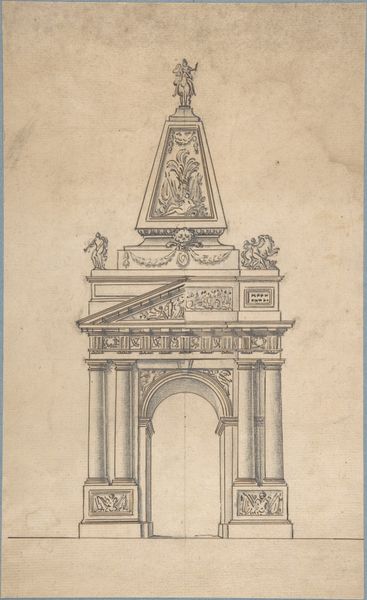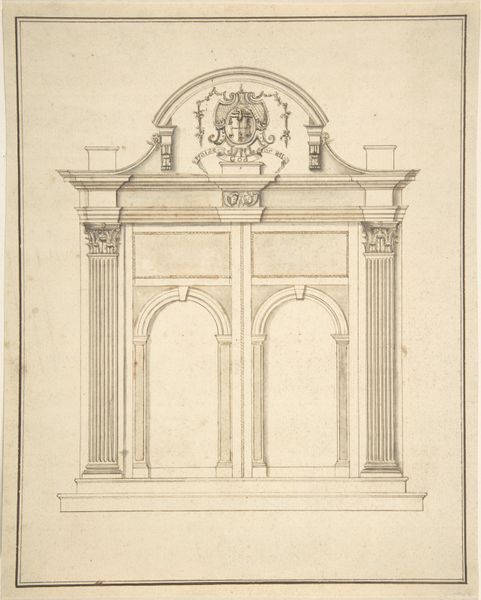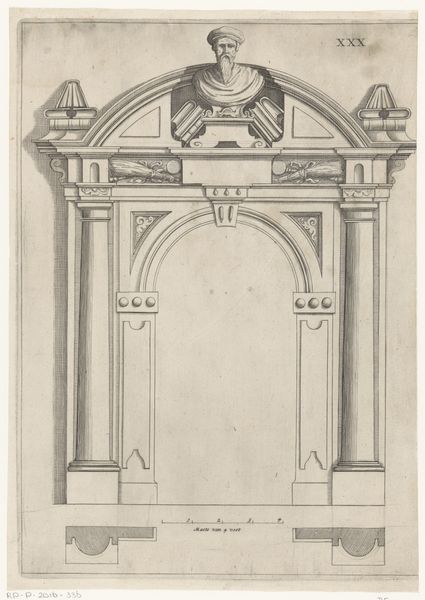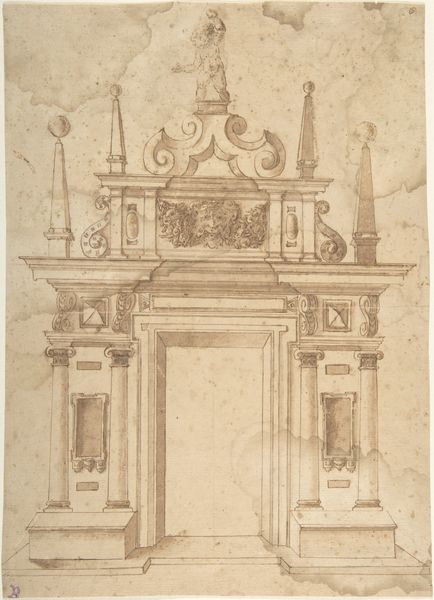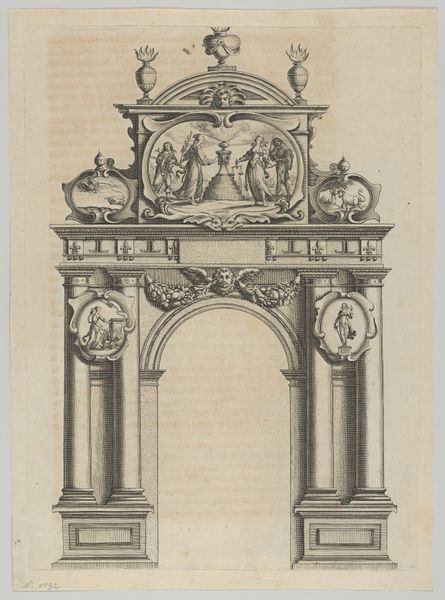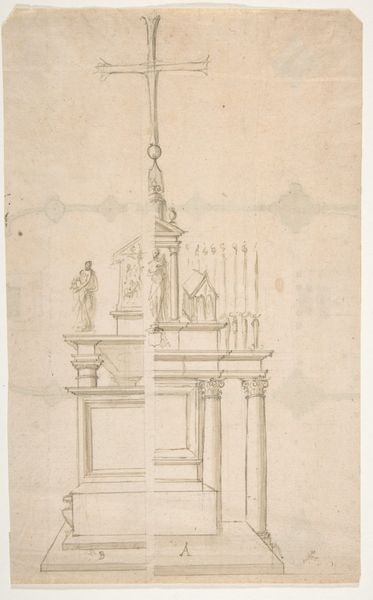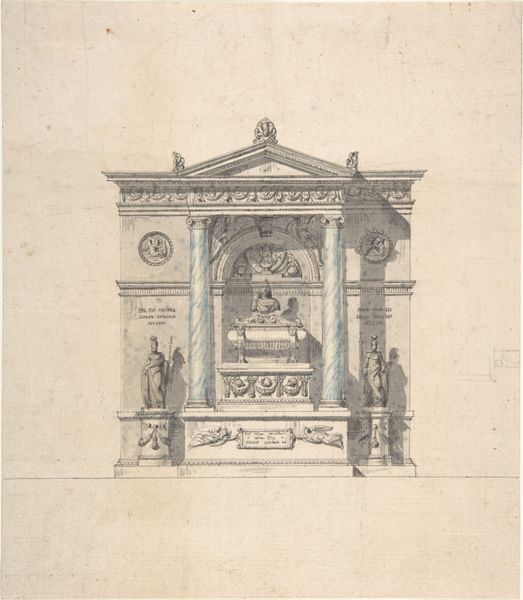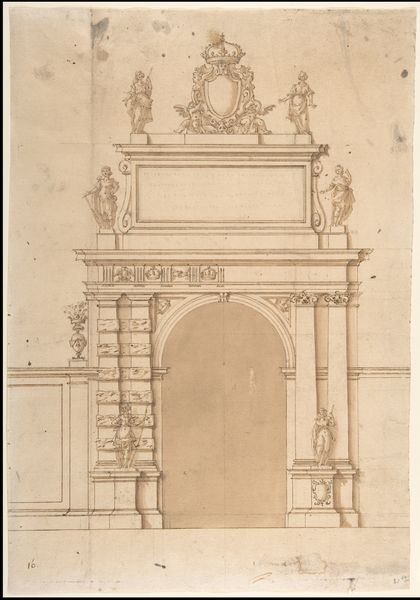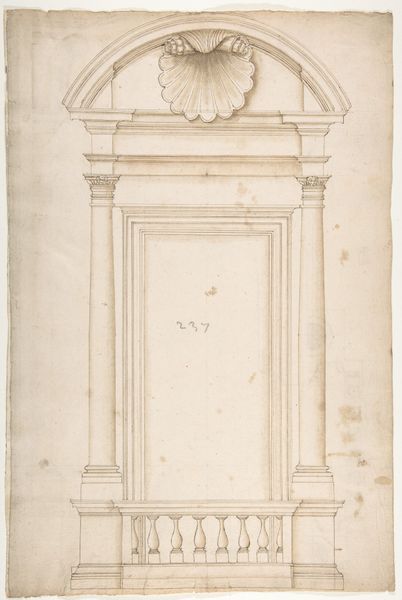
drawing, print, pencil, architecture
#
drawing
# print
#
coloured pencil
#
ancient-mediterranean
#
pencil
#
history-painting
#
academic-art
#
architecture
Dimensions: 18 3/4 x 12 5/16 in. (47.6 x 31.2 cm)
Copyright: Public Domain
Curator: Welcome! Before us hangs a design, attributed to an anonymous artist of the 17th century: “Design for an Entrance Arch," now held at the Metropolitan Museum of Art. The work is primarily pencil and colored pencil, an architectural rendering offering insight into the period’s aesthetic ideals. Editor: Immediately, the arch strikes me as a monument to the passage of time. The clock dominating the upper register combined with the symbolic weight of an entranceway… it's like a grand statement on journeys and destinations. Curator: Indeed, the architectural drawing embodies temporal considerations but it also begs inquiry into who this space was built *for.* Who would pass through it, and to what purpose? One can almost sense the pressure and the opportunities such formal entries would create, impacting material needs and status signifiers in society. Editor: You raise fascinating points! To me, the iconography speaks volumes, too. The eagle perched at the apex, the classically inspired details... they all evoke imperial power, Roman triumph. One imagines dignitaries, perhaps even royalty, proceeding beneath this arch. A grand processional gesture. Curator: Absolutely. It reminds me how artistic labor was employed during this time in service of these grandiose displays and to produce a clear visual distinction between the ruling elite and the broader populace, reflecting the era's consumption patterns. This drawing probably represents design thinking involved in the act of commissioning art objects intended to shape public perception. Editor: Yes, and what perceptions were intended. Beyond mere power, the clock face—a peculiar, and somewhat out-of-scale choice above the opening—might represent the temporal reign of the rulers who commissioned it. Is this a symbol for earthly empires meant to suggest perpetuity, despite being inherently finite? Curator: Right – how would such construction materially shift people’s everyday lived experiences? Did it cause economic ripples within the artist's own circles by changing labor needs? Did it represent the start of projects of great financial investment by merchant groups? This rendering really spurs speculation about the practical impacts and artistic processes linked to producing pieces with intended iconographic influence. Editor: I agree completely. Examining the blend of practical design and deeply embedded symbolism provides a compelling glance into 17th century aspirations and beliefs. Curator: And hopefully prompts new perspectives around what art does and how much physical labor and socio-economic conditions shaped visual arts back then! Editor: I'll certainly remember this artwork as more than a simple depiction. It now speaks of journeys, empires, and fleeting moments, permanently frozen on paper.
Comments
No comments
Be the first to comment and join the conversation on the ultimate creative platform.
